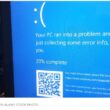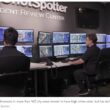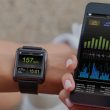The most important tool
At its most basic level, the spectrum analyzer is a frequency-selective voltmeter calibrated to display the rms value of a sine wave. The most familiar output of the spectrum analyzer is a display of amplitude versus frequency, which is useful for a variety of RF measurements, including channel power, emission mask compliance, spurious products, intermodulation interference, noise, adjacent channel occupied power, radiated interference, modulation index, and occupied bandwidth. When equipped with a tracking generator, the spectrum analyzer also can be used to collect stimulus/response measurements of filters, isolators, couplers, amplifiers, or other active and passive devices. The spectrum analyzer is probably the most important single test instrument available to the land mobile radio technician or engineer.
Our treatment of the spectrum analyzer proceeds in four parts: theory of operation, instrument limitations, typical measurements and common pitfalls.
Theory of operation
The most popular form of the spectrum analyzer is a swept frequency superheterodyne receiver employing a variable resolution bandwidth filter, envelope detector, log amplifier and variable video bandwidth filter as shown in Figure 1. Typically, the output of the sample and hold circuit is sampled by an A/D converter, and the resulting digital signal is displayed on an LCD.
Instrument limitations
The spectrum analyzer is an ultrawideband, superheterodyne receiver with high dynamic range. Wide bandwidth and high dynamic range are difficult to achieve without sacrificing sensitivity, and spectrum analyzers have notoriously bad noise figures. A high-performance spectrum analyzer will have a noise figure of 22 dB, while low-cost units often have noise figures greater than 30 dB. In comparison, a typical LMR repeater has a noise figure of 6 dB, so a spectrum analyzer is generally a poor choice for measuring weak signals. One can improve the sensitivity of the spectrum analyzer with an external or internal preamplifier at the expense of degraded dynamic range.
A second limitation of the spectrum analyzer is its extremely wide front end. When measuring over-the-air signals at antenna sites, the analyzer’s front end is easily overdriven by unwanted signals, unless a bandpass filter is used to isolate the signal of interest. Note that the instrument salesman sometimes gets to specify the instrument’s dynamic range, and he knows the bigger the number, the better. Consequently, the dynamic range specified is often the difference (in dB) between the 1 dB compression point and the displayed noise floor using the narrowest resolution bandwidth available in the instrument. This advertised dynamic range can be as high as 130 dB. A better definition of dynamic range is the difference in amplitude between two input signals and the resulting third-order intermodulation (IM) product. Usually, this is a much smaller number for the same instrument — typically 70-80 dB for input signals at -30 dBm — but far more useful.
A third limitation of the spectrum analyzer is sweep speed. Many modern radio signals, such as 802.11 Wi-Fi signals, are pulsed signals that may turn on and off several times before the analyzer can sweep the 20 MHz bandwidth of the signal. A slow sweep speed makes it impossible to see the entire signal in one sweep. Instead, the signal appears in pieces and resembles multiple signals rather than one.
Typical measurements
Channel power is a common spectrum analyzer measurement for modern instruments with embedded processors. Figure 2 is a channel power trace of an 800 MHz iDEN signal collected by an Agilent E4401B spectrum analyzer.
Another common class of measurements for spectrum analyzers with tracking generators is the stimulus/response measurement. Measuring the frequency response of a filter is an example of a stimulus/response measurement. Figure 3 shows the frequency response of a cellular reverse-link bandpass filter designed to pass 824-849 MHz.
Less common measurements include burst-power measurements for pulsed signals such as Wi-Fi and WiMAX. Some instruments have a burst-power feature that generally operates in zero span with a circuit that triggers on the rising edge of the pulsed signal.
Modern spectrum analyzers also can measure adjacent-channel power, occupied bandwidth and modulation index.
Common pitfalls
Some common measurement pitfalls and corresponding fixes include:
Pitfall: Measuring channel power using the analyzer’s marker. This very common mistake results when the resolution bandwidth of the analyzer is narrower than the bandwidth of the signal being measured. For example, a GSM cellular phone signal is nominally 200 kHz wide, but a common default resolution bandwidth is 30 kHz. The marker power is just the power captured inside the resolution bandwidth filter. For the GSM example, the marker power will under-report the GSM channel power by a factor of 200/30, or 8.2 dB.
Fix: Modern mid- and high-level instruments have a feature called channel power for accurately measuring power inside a specified bandwidth. The channel-power routine employs a resolution bandwidth much narrower than the channel bandwidth and sums the power captured in each frequency bin to calculate the total channel power.
Pitfall: Mistaking instrument-generated intermodulation for external intermodulation. Strong signals will drive the front-end amplifier into its non-linear region, and the resulting IM products will look identical to IM products generated outside the instrument.
Fix: Because IM is a nonlinear effect, attenuating the two equal amplitude input signals by 3 dB will attenuate internal third-order IM products by 9 dB. The instrument’s internal attenuator can be used to check for linearity. If the IM product drops by the same amount as the introduced attenuation, then the IM product is generated outside the analyzer.
Pitfall: Assuming interference is absent because no interference is present on the display. Most LMRs are much more sensitive than the spectrum analyzer, and significant interference may be hiding below the noise floor of the analyzer.
Fix: Employ either the internal preamplifier (if so equipped) or an external preamplifier to improve the composite noise figure to a level comparable to the LMR receiver.
Pitfall: Mistaking a pulsed signal for multiple frequency-hopping signals. If the pulse period is shorter than the sweep duration, a pulsed signal will appear to be multiple frequency-hopping signals.
Fix: Although the analyzer displays amplitude versus frequency, the horizontal axis is also a time axis because the sweep duration is always greater than zero. Take several measurements using several different sweep speeds. If the apparent bandwidth of the “hopped” signal changes with sweep duration, then the signal is probably pulsed.
Jay Jacobsmeyer is president of Pericle Communications Co., a consulting engineering firm in Colorado Springs, Colo. He holds BS and MS degrees in electrical engineering from Virginia Tech and Cornell University, respectively, and has more than 25 years of experience as a radio-frequency engineer.

















